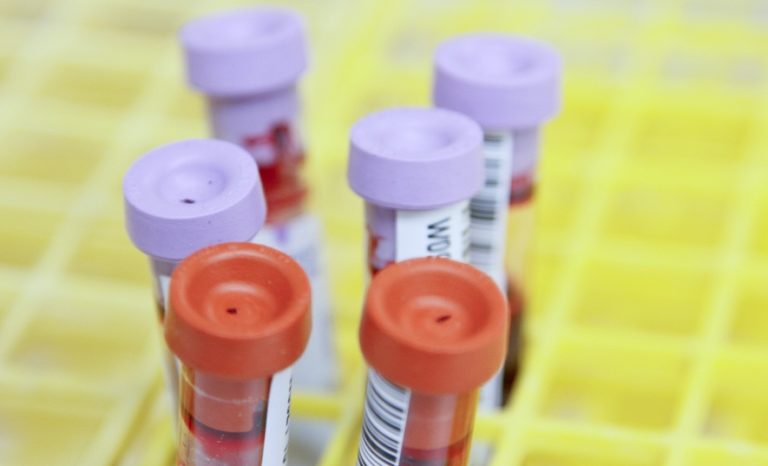Chloroquine or
Hydroxychloroquine
Recommendation: There are insufficient clinical data to recommend either for or against using chloroquine or hydroxychloroquine for the treatment of COVID-19 (AIII).
When chloroquine or hydroxychloroquine is used, clinicians should monitor
the patient for adverse effects (AEs), especially prolonged QTc interval (AIII).
Rationale for Recommendation: Chloroquine and hydroxychloroquine have been used in small randomized trials and in some case series with conflicting study reports (as described below). Both drugs are available through the Strategic National Stockpile for hospitalized adults and adolescents weighing ≥50 kg who cannot access these drugs through a clinical trial.
Background: Chloroquine is an antimalarial drug developed in 1934. Hydroxychloroquine, an analogue of chloroquine, was developed in 1946 and is used to treat autoimmune diseases, such as systemic lupus erythematosus (SLE) and rheumatoid arthritis (RA). In general, hydroxychloroquine has less toxicity (including less propensity to prolong the QTc interval) and fewer drug-drug interactions than chloroquine.
Proposed Mechanism of Action and Rationale for Use in COVID-19:
Both chloroquine and hydroxychloroquine increase the endosomal pH, inhibiting fusion of the SARS-CoV-2 and the host cell membrane.
Chloroquine inhibits glycosylation of the cellular
angiotensin-converting enzyme 2 (ACE2) receptor, which may interfere with
binding of SARS-CoV to the cell receptor.
In vitro, both drugs may
block the transport of severe acute respiratory syndrome coronavirus 2
(SARS-CoV-2) from early endosomes to endolysosomes, which may be required for
release of the viral genome.
Several studies have demonstrated in vitro activity
of chloroquine against SARS-CoV.
Both drugs have immunomodulatory effects.Clinical Data in COVID-19:
The clinical data available to date on the use of chloroquine and
hydroxychloroquine to treat COVID-19 have been mostly from use in patients with
mild, and in some cases, moderate disease; data on use of the drugs in patients
with severe and critical COVID-19 are very limited. The clinical data are
summarized below.
Chloroquine
Study Description: In a small randomized controlled trial in China, 22 hospitalized patients with COVID-19 (none critically ill) were randomized to chloroquine 500 mg orally twice daily or lopinavir 400 mg/ritonavir 100 mg twice daily for 10 days. Patients with a history of heart disease (chronic disease and history of arrhythmia), kidney, liver, or hematologic diseases were excluded from participation. Primary study outcome was SARS-CoV-2 polymerase chain reaction (PCR) negativity at Days 10 and 14. Secondary outcomes included improvement of lung computed tomography (CT) scan at Days 10 and 14, discharge at Day 14, and clinical recovery at Day 10, as well as safety determined by evaluation of study drug-related AEs.
Results: Ten patients received chloroquine and 12 patients received lopinavir/ritonavir. Patients had good peripheral capillary oxygen saturation (SpO2) at baseline (97% to 98%).
Compared to the lopinavir/ritonavir-treated patients, the
chloroquine-treated patients had a shorter duration from symptom onset to
initiation of treatment (2.5 days vs. 6.5 days, P <
0.001).
Though not statistically significant, patients in the
chloroquine arm were younger (median age 41.5 years vs. 53.0 years, P = 0.09). Few patients had co-morbidities.
At Day 10, 90% of the chloroquine-treated patients and 75%
of the lopinavir/ritonavir-treated patients had negative SARS-CoV-2 PCR. At Day
14, the percentages for the chloroquine-treated patients and the
lopinavir/ritonavir-treated patients were 100% and 91.2%, respectively.
At Day 10, 20% of the chloroquine-treated patients and 8.3%
of the lopinavir/ritonavir-treated patients had CT scan improvement. At Day 14,
the percentages for the chloroquine-treated patients and
lopinavir/ritonavir-treated patients were 100% and 75%, respectively.
At Day 14, 100% of the chloroquine-treated patients and 50%
of the lopinavir/ritonavir-treated patients were discharged from the hospital.
The risk ratios of these outcome data cross 1, and the
results were not statistically significant.
Both drugs were generally well-tolerated.
Limitations: The trial sample size was very small, and the participants were fairly young.
The chloroquine-treated patients were younger and had fewer
symptoms prior to treatment initiation, which are variables that could have
affected the study protocol-defined outcomes.
Patients with chronic co-morbidities and critically ill
patients were excluded from the study.
Hydroxychloroquine
Study Description: In a randomized controlled trial in China, 62 hospitalized patients with mild (SaO2/SpO2 ratio >93% or PaO2/FIO2 ratio >300 mm Hg) CT-confirmed COVID-19 pneumonia were randomized to hydroxychloroquine 200 twice daily for 5 days plus standard treatment or to standard treatment only.6 Standard treatment included oxygen therapy, antiviral and antibacterial therapy, and immunoglobin, with or without corticosteroids.
Results: Compared to the control patients, the hydroxychloroquine-treated patients had a 1 day-shorter mean duration of fever (2.2 days vs. 3.2 days) and cough (2.0 days vs. 3.1 days).
13% of the control patients and none of the
hydroxychloroquine-treated patients experienced progression of illness.
80.6% of hydroxychloroquine-treated patients and 54.8% of
control patients experienced either moderate or significant improvement in
chest CT scan.
AEs (1 rash, 1 headache) occurred among 2 (6.4%)
hydroxychloroquine-treated patients; none occurred among the control patients.
Limitations: The trial had a small sample size and short follow-up.
Standard treatment is complex and not well defined.
The presence and distribution of associated co-morbidities
(e.g., hypertension [HTN], diabetes, lung disease) was not reported.
There was no indication that radiologists were blinded to
the treatment status of the patients, which could have biased determination of
the chest CT outcome.
Study Description: A pilot trial in China randomized 30 patients with COVID-19 to hydroxychloroquine 400 mg once a day for 5 days or conventional treatment.
Results: The trial demonstrated no difference in viral clearance of nasopharyngeal (NP) swabs at Day 7 between the hydroxychloroquine arm (86.7%) and the control arm (93.3%).
One patient in the hydroxychloroquine arm progressed to
severe pneumonia. At follow-up, all patients showed clinical improvement.
Study Description: In a case series from France, 26 hospitalized adults with SARS-CoV-2 infection categorized as asymptomatic or with upper or lower respiratory tract infection who received hydroxychloroquine 200 mg 3 times daily for 10 days were compared to 16 control individuals (i.e., who refused treatment, did not meet eligibility criteria, or were from a different clinic).
- Results: Six patients in the hydroxychloroquine group were excluded from the analysis for the following reasons:
- One died
- Three were transferred to the intensive care unit (ICU)
- One stopped the study drug due to nausea
- One withdrew from the stud
- Six patients also received azithromycin.
By Day 6, NP PCRs were negative in 14 of 20 (70%)
hydroxychloroquine-treated patients and 2 of 16 (12.5%) controls.
Among the hydroxychloroquine patients, 8 of 14 (57.1%) who
received only hydroxychloroquine and 6 of 6 (100%) who received
hydroxychloroquine and azithromycin had negative NP PCRs by Day 6.
Clinical outcomes for all patients were not reported.
- Limitations: There are several methodologic concerns with this case series:
- The small sample size of the series.
- The criteria for enrollment of cases and controls is unclear.
- Asymptomatic individuals were enrolled.
- Exclusion of six hydroxychloroquine patients includes one death and three ICU transfers.
- No clinical outcomes were reported; thus, the clinical significance of a negative PCR is unknown.
The reason for the addition of azithromycin for some patients is unclear.
Adverse Effects:
Chloroquine and hydroxychloroquine have a similar toxicity profile, although hydroxychloroquine is better tolerated and has a lower incidence of toxicity than chloroquine.
Cardiac Adverse Effects: QTc prolongation, Torsade de Pointes, ventricular arrythmia, and cardiac deaths.
The risk of QTc prolongation is greater for chloroquine than
for hydroxychloroquine.
Concomitant medications that pose a moderate to high risk
for QTc prolongation (e.g., antiarrhythmics, antipsychotics, antifungals,
macrolides [including azithromycin] and fluoroquinolone antibiotics)9 should be used only if necessary.
Consider using doxycycline rather than azithromycin as empiric therapy for
atypical pneumonia.
Baseline and follow-up electrocardiogram (ECG) are
recommended when there are potential drug interactions with concomitant
medications (e.g., azithromycin) or underlying cardiac diseases.
The risk-benefit ratio should be closely assessed for patients
with cardiac disease, history of ventricular arrhythmia, bradycardia (<50
beats per minute), or uncorrected hypokalemia and/or hypomagnesemia.
Other Adverse Effects: Hypoglycemia, rash, and nausea (daily divided doses may reduce nausea). Retinopathy, bone marrow suppression with long-term use, but not likely with short-term use.
There is no evidence that glucose-6-phosphate dehydrogenase
(G6PD) deficiency is relevant for the use of hydroxychloroquine, and G6PD
testing is not recommended.
With chloroquine use, there is a greater risk for hemolysis
in patients with G6PD deficiency. Conduct G6PD testing before initiation of
chloroquine. Consider using hydroxychloroquine until G6PD test results are
available. If the test results indicate that the patient is G6PD deficient,
hydroxychloroquine should be continued.
Drug-Drug Interactions: Chloroquine and hydroxychloroquine are moderate inhibitors of cytochrome P450 (CYP) 2D6 and are also P-glycoprotein (P-gp) inhibitors. Use caution when co-administering the drugs with concomitant medications metabolized by CYP2D6 (e.g., certain antipsychotics, beta-blockers, selective serotonin reuptake inhibitors, and methadone) or transported by P-gp (e.g., certain direct-acting oral anticoagulants or digoxin).
- Considerations in Pregnancy:
- Anti-rheumatic doses of chloroquine and hydroxychloroquine have been used safely in pregnant women with SLE.
- Hydroxychloroquine has not been associated with adverse pregnancy outcomes in ≥300 human pregnancies with exposure to the drug.
- A lower dose of chloroquine (500 mg once a week) is used for malaria prophylaxis in pregnancy.
- Dosing/pharmacokinetics/pharmacodynamics: No dosing changes in pregnancy.
Considerations in Children: Chloroquine and hydroxychloroquine have been used routinely in pediatric populations for the treatment and prevention of malaria and for rheumatologic conditions.
Drug Availability: Hydroxychloroquine is Food and Drug Administration (FDA)-approved for the treatment of malaria, lupus erythematosus, and RA and is available commercially. Hydroxychloroquine is not approved for the treatment of COVID-19.
FDA issued an emergency use authorization (EUA) for the use
of chloroquine and hydroxychloroquine donated to the Strategic National
Stockpile. The EUA authorizes the use of these donated drugs for the treatment
of hospitalized adolescent and adult COVID-19 patients who weigh ≥50 kg and for
whom a clinical trial is not available, or participation is not feasible.
Hydroxychloroquine plus Azithromycin
Recommendation: The COVID-19 Treatment Guidelines Panel (the Panel) recommends against the use of hydroxychloroquine plus azithromycin for the treatment of COVID-19, except in the context of a clinical trial (AIII).
Rationale for Recommendation: Chloroquine and hydroxychloroquine for COVID-19 have been used in small randomized trials and in some case series with conflicting study reports (as described above). The combination of hydroxychloroquine and azithromycin was associated with QTc prolongation in patients with COVID-19.
Clinical Data in COVID-19
Study Description: In a case series of 80 hospitalized patients with COVID-19 (including six patients from a previous study),8 patients were treated with hydroxychloroquine sulfate 200 mg three times daily for 3 to 10 days plus azithromycin 500 mg for 1 day followed by 250 mg once daily for 4 days. Mean time from symptom onset to treatment was 4.9 ± 3.6 days. Outcomes evaluated included the need for oxygen therapy or ICU transfer after ≥3 days of therapy, NP PCR, SARS-CoV-2 culture, and length of hospitalization.
Clinical Results: One (1.2%) patient died and three (3.8%) patients required ICU transfer, 12 (15%) patients required oxygen therapy.
65 (81.2%) patients were discharged to home or transferred to other units for continuing treatment; 14 (17.4%) patients remained hospitalized at the time the study results were published.
Laboratory Results: 40 of 60 (66.7%) patients tested on Day 6 had negative NP PCR.
All patients tested had negative PCRs by Days 12 through14.
Culture positivity decreased over time among the small number of patients for whom cultures were obtained.
- Limitations:
- The trial’s lack of a control group, which is particularly important because many people with mild disease improve in the absence of treatment.
- The criteria for selection of cases was not reported.
- Data for PCR and culture results were missing.
- The definition of “discharge” varied and was unclear.
- The lack of complete or longer-term follow-up.
Study Description: A prospective case series from France of 11 consecutive hospitalized patients with COVID-19 (eight with significant co-morbid conditions: obesity in two; solid cancer in three; hematological cancer in two; HIV-infection in one). Ten of 11 patients were receiving supplemental oxygen upon treatment initiation.All patients were treated with hydroxychloroquine 600 mg once daily for 10 days and azithromycin 500 mg for 1 day followed by 250 mg once daily for 4 days.
Results: Within 5 days, the condition of three patients worsened, including one patient who died and two patients who were transferred to the ICU.
AEs: Hydroxychloroquine was discontinued in one patient due
to QTc prolongation.
Qualitative NP PCR remained positive at Days 5 and 6 after
treatment initiation in 8 of 10 patients (repeat testing not done in the
patient who died).
Study Description: A case series in the United States reported changes in QTc interval in 84 patients with COVID-19 who received the combination of hydroxychloroquine and azithromycin.
- Results:
- 84 patients, 74% male, mean age 63 ± 15 years, 65% had HTN, baseline serum creatinine 1.4 mg/dL, 13% required vasopressors, 11% had coronary artery disease.
- Concomitant drugs that may prolong QTc interval: 11% on neuropsychiatric drugs and 8% received levofloxacin, lopinavir/ritonavir or tacrolimus.
- Four patients died, without arrhythmia.
- Mean baseline QTc was 435 ± 24 ms, mean maximum QTc was 463 ± 35 ms.
- Mean time to maximum QTc was 3.6 ±1.6 days, ECG follow-up was done for a mean of 4.3 days.
- 11% of patients developed QTc >500 ms; the QTc increased by 40 to 60 ms and >60 ms in 18% and 12% of patients, respectively.
- Baseline QTc was not a predictor of subsequent QTc increase during therapy.
- In multivariate analysis, acute kidney injury (in five patients) was a significant predictor of severe QTc prolongation (odds ratio [OR] 19.45: 95% CI, 2.06–183.88, P = 0.01).
Clinical Trials: Clinical trials to test the safety and efficacy of chloroquine or hydroxychloroquine with or without azithromycin in people who have or are at risk for COVID-19 are in development in the United States and internationally. Please check ClinicalTrials.gov for the latest information.
Lopinavir/Ritonavir and Other HIV Protease Inhibitors
Recommendation: The Panel recommends against the use of lopinavir/ritonavir (AI) or other HIV protease inhibitors (AIII) for the treatment of COVID-19, except in the context of a clinical trial.
Rationale for Recommendation: The pharmacodynamics of HIV protease inhibitors do not support their therapeutic use for COVID-19. Also, lopinavir/ritonavir was studied in a small randomized controlled trial in patients with COVID-19 with negative results (see below).
Lopinavir/Ritonavir
Proposed Mechanism of Action and Rationale for Use in
COVID-19:
Replication of SARS-CoV-2 depends on the cleavage of
polyproteins into an RNA-dependent RNA polymerase and a helicase. The
enzymes responsible for this cleavage are two proteases, 3-chymotrypsin-like
protease (3CLpro) and papain-like protease (PLpro).
Lopinavir/ritonavir is an inhibitor of SARS-CoV 3CLpro in vitro, and this protease appears highly conserved in
SARS-CoV-2.
Although lopinavir/ritonavir has in vitro activity
against SARS-CoV, it is thought to have a poor selectivity index, indicating that
higher than tolerable levels of the drug might be required to achieve
meaningful inhibition in vivo.
Lopinavir is excreted in the gastrointestinal (GI) tract,
and thus coronavirus-infected enterocytes might be exposed to higher
concentrations of the drug.
Clinical Data in COVID-19: Study Description: In a Chinese cohort of 55 pre-symptomatic patients identified early in the course of the infection (i.e., tested RT-PCR positive after a family member or close contact was found to have COVID-19), all of whom were given lopinavir/ritonavir for 7 days; all recovered and none required ICU admission.
Study Description: In a clinical trial that randomized 199 patients to lopinavir 400 mg/ritonavir 100 mg orally twice daily for 14 days or to standard of care (SOC), patients randomized to the lopinavir/ritonavir arm did not have a shorter time to clinical improvement.
Results: There was a lower, but not statistically significant, mortality rate (lopinavir/ritonavir 19.2%, on SOC 25.0%) and shorter ICU stay compared to those given SOC (6 days vs. 11 days; difference = -5 days; 95% CI, -9 to 0).
The duration of hospital stays and time to clearance of
viral RNA from respiratory tract samples did not differ between the
lopinavir/ritonavir and SOC arms.
Nausea, vomiting, and diarrhea were all more frequent in the
lopinavir/ritonavir-treated group.
The study was powered only to show a fairly large effect.
Study Description: In a trial of 44 hospitalized patients with mild-to-moderate COVID-19, 21 patients were randomized to lopinavir/ritonavir, 16 patients to the broad-spectrum antiviral Arbidol (available in Russia), and seven patients to SOC.
Results: The time to a negative SARS-CoV-2 nucleic acid pharyngeal swab was not shorter for patients receiving lopinavir/ritonavir (8.5 days [IQR: 3, 13]) than for those receiving SOC (4 days [IQR: 3, 10.5]).
Progression to severe/critical status occurred among eight
(38%) patients receiving lopinavir/ritonavir and one patient (14%) on SOC.
Study Description: A small randomized study in China
compared lopinavir/ritonavir to chloroquine. Please refer to the chloroquine
section for the study description.
Clinical Trials: None in the United States
Monitoring, Adverse Effects, and Drug-Drug Interactions
- Adverse Effects Include:
- Nausea, vomiting, diarrhea (common)
- QTc prolongation
- Hepatotoxicity
Lopinavir/ritonavir is a potent inhibitor of CYP3A, and many
medications metabolized by this enzyme may cause severe toxicity. Please refer
to the Guidelines for the Use of
Antiretroviral Agents in Adults and Adolescents Living with HIV for
a list of potential drug interactions.
Considerations in Pregnancy: There is wide experience with use of lopinavir/ritonavir in pregnant women with HIV and the drug has a good safety profile.
No evidence of human teratogenicity (can rule out a 1.5-fold
increase in overall birth defects).
Low placental transfer to the fetus. Please refer to the Recommendations for the Use
of Antiretroviral Drugs in Pregnant Women with HIV Infection and Interventions
to Reduce Perinatal HIV Transmission in the United States.
Dosing: Lopinavir/ritonavir oral solution contains 42.4% (volume/volume) alcohol and 15.3% (weight/volume) propylene glycol and is not recommended for use during pregnancy. Please refer to the Recommendations for the Use of Antiretroviral Drugs in Pregnant Women with HIV Infection and Interventions to Reduce Perinatal HIV Transmission in the United States.
Once daily lopinavir/ritonavir dosing is not recommended during pregnancy.
Considerations in Children: Lopinavir/ritonavir is approved for the treatment of HIV in infants, children, and adolescents.
There are no data on the efficacy of lopinavir/ritonavir
used to treat SARS-CoV-2 infection in pediatric patients.
Darunavir/Cobicistat or Darunavir/Ritonavir
Rationale for Use, Proposed Mechanism of Action for
COVID-19:
Inhibition of the 3CLpro enzyme of SARS-CoV-2 and possibly
also inhibition of the PLpro enzyme.
Results from an unpublished randomized controlled trial of
30 patients in China showed that darunavir/cobicistat was not effective in the
treatment of COVID-19.
Clinical Trials: None in the United States
Other HIV Protease Inhibitors, Including Atazanavir:
There are no data from clinical trials that support the use of other HIV
protease inhibitors to treat COVID-19.
Remdesivir
Recommendation: There are insufficient clinical data to recommend either for or against the use of the investigational antiviral agent remdesivir for the treatment of COVID-19 (AIII).
Rationale for Recommendation: Remdesivir is an investigational antiviral drug. Clinical trials of remdesivir for treatment of COVID-19 are underway or in development, but trial data is not yet available.
Proposed Mechanism of Action and Rationale for Use in COVID-19: Remdesivir is an intravenous investigational nucleotide prodrug of an adenosine analog. It has demonstrated in vitro activity against SARS-CoV-2, and in vitro and in vivo activity (based on animal studies) against SARS-CoV and MERS-CoV.Remdesivir binds to the viral RNA-dependent RNA polymerase, inhibiting viral replication through premature termination of RNA transcription.
Preclinical studies show that remdesivir improves disease outcomes and reduces levels of SARS-CoV in mice. When given as prophylaxis or therapy, remdesivir also reduces MERS-CoV levels and lung injury in mice. In a rhesus macaque model of MERS-CoV infection, prophylactic remdesivir prevented MERS-CoV clinical disease.
When given 12 hours after MERS-CoV infection to rhesus macaques, remdesivir reduced viral replication and the severity of lung disease compared to control animals.
Remdesivir is administered by intravenous infusion at 200 mg on Day 1
followed by 100 mg/day for up to 10 days; the drug is usually infused over 30
to 60 minutes.
Clinical Data to Date: Only anecdotal data are available.
Clinical Trials: Multiple clinical trials are currently underway or in development. Please check ClinicalTrials.gov for the latest information.
In areas of the United States without access to clinical trials,
remdesivir may be available through an expanded access program or compassionate
use program for a subset of patients.
Monitoring, Adverse Effects, and Drug-Drug Interactions: Remdesivir can cause GI symptoms (e.g., nausea, vomiting), elevated transaminases, and prothrombin time elevation (without change in international normalized ratio [INR]).
Remdesivir is a CYP3A4, CYP2C8, and CYP2D6 substrate in vitro. Coadministration of remdesivir with inhibitors of these enzymes is not expected to have a significant impact on remdesivir concentrations.
Remdesivir concentration may be affected by strong CYP inducers, but the interaction is not expected to be clinically significant.
Because remdesivir formulation contains renally cleared
sulfobutylether-beta-cyclodextrin sodium (SBECD), patients with estimated glomerular
filtration rate (eGFR) <50 mL/min are excluded from some clinical trials
(some trials have a cutoff of eGFR <30 mL/min).
Considerations in Pregnancy: Remdesivir is available for pregnant women through a compassionate access program.
In a randomized controlled Ebola treatment trial of
therapies including remdesivir, among 98 females who received remdesivir, six
had a positive pregnancy test; the obstetric and neonatal outcomes were not
reported in the study.
Considerations in Children: Currently, remdesivir is available for compassionate use for patients aged <18 years.
In the same randomized controlled trial for the treatment of Ebola virus infection, 41 pediatric patients aged <7 days to <18 years received remdesivir. The safety and clinical outcomes in children were not reported separately in the published results for the trial.
https://www.covid19treatmentguidelines.nih.gov/therapeutic-options-under-investigation/antiviral-therapy/













